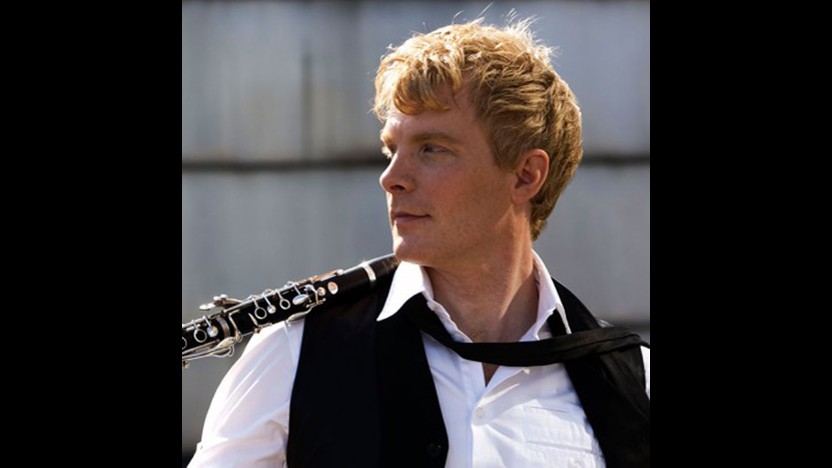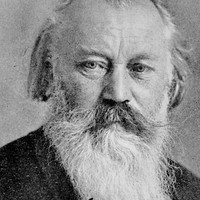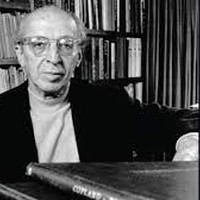Martin Fröst Plays Copland and Brahms



In 1890, and again in 1894, Brahms announced his retirement from composition. Both times, he returned to create more music for one particular performer, clarinetist Richard Mühlfeld, from the court orchestra in Meiningen, Germany. The conductor Fritz Steinbach wisely arranged for Mühlfeld to play privately for Brahms in 1891; breaking a year’s compositional silence, Brahms responded with a Clarinet Trio (Opus 114) and a Clarinet Quintet (Opus 115), both composed during his summer holiday in an Austrian spa town. Mühlfeld premiered both works that winter, joined by the string quartet led by Brahms’ longtime friend Joseph Joachim.
Brahms’ model for the Clarinet Quintet was a work that Mozart composed for the same ensemble of clarinet, two violins, viola and cello in 1789. (As with Brahms, Mozart’s inspiration was personal: he wrote the quintet and a later concerto for his close friend Anton Stadler.) Perhaps it is just coincidence that Mozart and Brahms both embraced the clarinet in what proved to be their final years, but the combined impact of their labors—especially the matching quintets—tend to conjure adjectives like “wistful” and “nostalgic” and especially “autumnal,” as if the music foretells, with peace and resignation, the nearness of death.
There is indeed a bittersweet quality to the Allegro movement that begins the Brahms Clarinet Quintet, much of it generated by the continual pull of the listener’s expectations between major and minor tonalities. The movement begins with sweetness, as the violins twine together in thirds; at this point, the ear perceives the key as D major. Almost a minute passes before the harmony lands with any real force on the actual home key of B minor, and soon enough it leaves again for D major, the setting of the secondary theme. Those two keys are flip sides of the same coin, sharing all the same scale tones, and the movement continually flips that coin such that we bounce from the hopefulness of the major key to the heaviness of the minor.
The slow movement again treads a delicate emotional line between joy and sadness. Partly the effect here comes from the tone color, with the strings muted, but the real pull at the heartstrings is the result of a musical technique known as modal mixture. In this movement the home key is B major, but some of the tones used are actually native to B minor. Each time those darker notes enter, starting with the very first measures, they create little pangs of disturbance. At the center of the movement, a contrasting passage sinks fully into B minor for music tinged with Gypsy flair.
Instead of a boisterous scherzo, the Clarinet Quintet clears the air with a smooth Andantino third movement. The work’s recurring conflict appears here as well, with a mischievous interlude in B minor dominating the latter half of the movement until the initial D-major music returns for one last phrase.
The finale takes shape as a theme and variations, elaborating a folk-like melody in B minor. Continuing the work’s ongoing pattern, one of the variations shifts to the major key, but ultimately the quintet is destined for a minor-key resolution.
— © Aaron Grad
Aaron Grad ©2016

By the time Copland introduced his Symphony No. 3 in 1946, which included the rousing Fanfare for the Common Man, he was the clear leader among American composers. His music even caught the ear of an unlikely champion of contemporary concert music: Benny Goodman, the “King of Swing,” who had taken to using the windfall from his commercial successes to commission new repertoire for the clarinet. Goodman gave Copland $2,000 and free reign on what to compose. Two years later, Copland delivered his Clarinet Concerto, scored for a small orchestra of strings, harp and piano. The structure is more compact than a typical concerto, using only two linked sections instead of three separate movements. A cadenza connects the two sections, with the clarinet playing music that gives an impression of free improvisation, even though it is fully notated.
Aaron Grad ©2019

With Hungary upended by a revolt against the Austrian Empire in 1848, refugees fled the country in droves. Many bound for the United States passed through Hamburg, where the influx of Hungarian musical styles captivated the fifteen-year-old Johannes Brahms. He was particularly struck by the violinist Ede Reményi, who returned five years later and hired Brahms as the piano accompanist for a three-month concert tour, providing the young composer further opportunity to absorb Hungarian sounds.
Brahms’ first-hand contact with Hungarian music informed his wildly popular and profitable Hungarian Dances, a series of 21 short works for piano, four-hands, published between 1869 and 1880 in four books. In a letter to his publisher, Brahms proclaimed the dances “genuine children of the Puszta and Gypsies—not, therefore, created by me, rather just reared on bread and milk.” The term “Puszta” referred to the vast Hungarian plain, populated for millennia by the Magyar people; “Gypsies” (or Romani people, as is now the preferred term) migrated into Hungarian lands beginning around the thirteenth century. Brahms’ compositions, drawing upon his impressions of those styles, were not specimens of faithful ethnomusicology, but rather free adaptations of folk melodies that had stuck in his ear since his youth.
There is a long tradition of adapting Brahms’ Hungarian Dances to feature instruments other than piano, going back to the transcriptions for violin made by Brahms’ Hungarian friend Joseph Joachim. These arrangements for clarinet and ensemble were created expressly for Martin Frost by his brother, Göran Fröst, a violist and composer. They include the first of the Hungarian Dances, a dashing minor-key number in a fast tempo, and the last of the set, with crushed notes that add a folksy color to the melodies. Hearing these dances played by clarinet underscores the close ties between Hungarian folk traditions and Klezmer, the Jewish dance music of the same region that often features clarinet.
Aaron Grad ©2016
Get driving directions and find nearby parking.
Find dining options close to the venue.
View seating charts to find out where you'll be seating.
SPCO concerts are made possible by audience contributions.
For exclusive discounts, behind-the-scenes info, and more:
Sign up for our email club!
